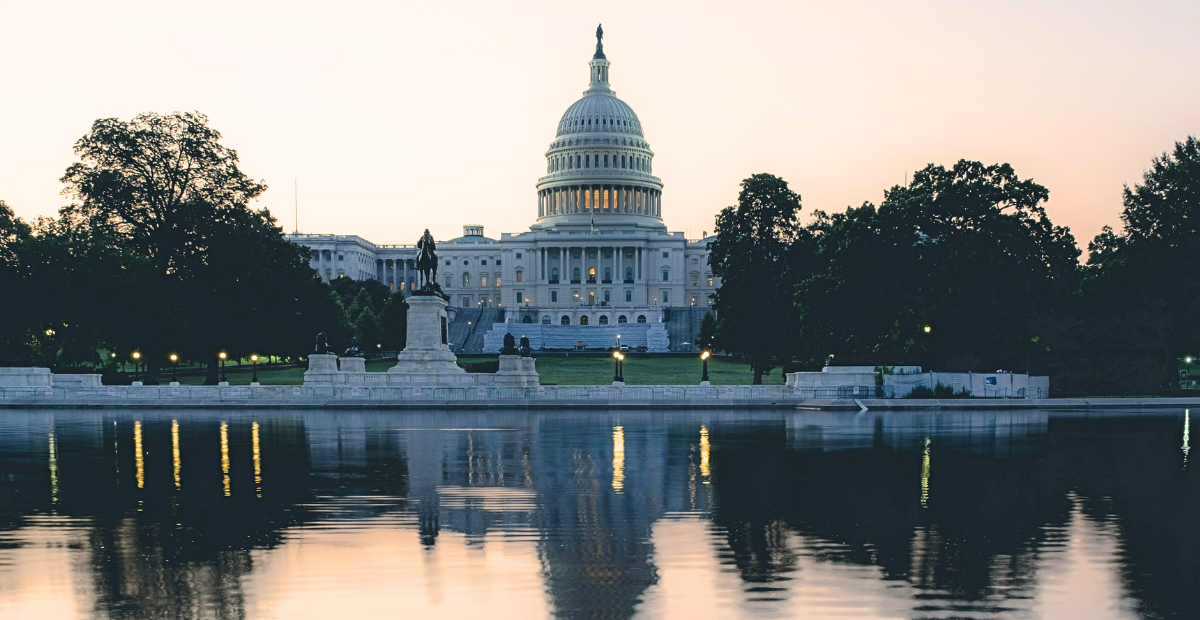Trump Signs Bill Reopening The Government, Ending Longest Shutdown In American History
on Nov 12, 2025

Government Reopens After 43-Day Shutdown
For the past six weeks, the House of Representatives had not convened, but that changed today, November 12, the 43rd day of the longest government shutdown in American history.
Following the House’s vote of 222-209, the Republican-backed bill to continue funding the government through January 31, with funding protections through the end of the coming fiscal year provided for several key federal programs, made its way to the Oval Office.
At 10:15 p.m. on November 12, President Donald Trump signed the bill from the House, officially reopening the government.
Through this, pay for federal employees and military personnel is now secured, as well as funding for significant federal programs, such as SNAP, or the Supplemental Nutrition Assistance Program, which helps provide food benefits for nearly 42 million Americans.
“Republicans never wanted a shutdown, and voted 15 times for a clean continuation of funding,” Trump said. “There’s never been a time when one or the other party didn’t sign a continuation … Yet the extremists in the other party insisted on creating the longest government shutdown in American history, and they did it purely for political reasons.”
Trump went on to note that the shutdown led to 20,000 flights being delayed, a million federal employees not being paid, and the many millions of Americans whose food benefits were threatened.
Continuing, he championed the One, Big Beautiful Bill, which was signed into law by Trump on July 4.
Moments before signing the bill to reopen the government, Trump said, “The country has never been in better shape. We went through this short-term disaster with the Democrats because they thought it would be good, politically, and it’s an honor now to sign this incredible bill and to get our country working again.”
Watch Trump sign the bill reopening the government, here:
Path To The Longest Shutdown In American History
On September 19, the Republican majority in the House approved a continuing resolution that was sent to the Senate ahead of the October 1 deadline to avoid a government shutdown.
Despite the continuing resolution being a clean, stopgap measure that added nothing new to the federal budget, division in the Senate led to the deadline for funding the government being missed.
As Democrats in the Senate sought to have subsidies expanded for the Affordable Care Act, commonly referred to as Obamacare, the Republicans held to the continuing resolution, which would fund the government through November 21 to allow for continued debate on the budget.
However, the gridlock in the Senate led to the shutdown going 41 days without an end in sight, with paychecks to federal employees and military personnel, as well as funding for government programs like SNAP, all being at risk.
With the help of seven Democrats and one Independent, on November 10, the Senate voted 60-40 on three key bills as well as a continuing resolution to fund the government through January 30, 2026.
Earlier on November 10, House Speaker Mike Johnson, R-LA, placed all representatives on a 36-hour notice to return “immediately” to Washington, D.C., to resolve the shutdown.
The House Votes 222 To 209 To Reopen The Government
Around 1 a.m. on Wednesday, November 12, the House Rules Committee voted 8-4 to advance the Senate’s continuing resolution, which will fund the government on the previous budget through January 30, 2026.
With it are three bills as part of a Senate minibus which will secure funding for veterans services, the U.S. Food and Drug Administration, and the U.S. Department of Agriculture, which funds the food benefit program utilized by 42 million Americans called SNAP, or the Supplemental Nutrition Assistance Program.
Ahead of the November 12 vote in the House, the House Democrats gathered on the steps of the Capitol, with House Minority Leader Hakeem Jeffries, D-NY, continuing to defend the Democrats’ promise of protecting healthcare access for vulnerable Americans.
“We say to the American people that we know that you deserve better,” Jeffries said. “You deserve much better than the chaos, the cruelty, and the corruption that you’ve seen.”
In addition to healthcare, Jeffries said Democrats will continue pushing to combat the high-cost of living in the nation, noting “it should not be the case” that people in America are struggling as they live paycheck to paycheck.
On the floor of the House, just before the House’s 8 p.m. vote on November 12 regarding the Senate’s continuing resolution to fund the government, Speaker Mike Johnson, R-LA, touted the Republican resolve to reopen the government.
Johnson added, “We’re not going to waste anymore time of the people … From the very beginning of this whole ordeal, on the Republican side, we operated in good faith.”
The vote was 222-209, with six Democrats crossing the aisle in favor of reopening the government. Those six Democrats were Rep. Jared Golden, D-ME; Rep. Adam Gray, D-CA; Rep. Henry Cuellar, D-TX; Rep. Marie Gluesenkamp Perez, D-WA; Don Davis, D-NC; and Tom Suozzi, D-NY.
Only two Republicans opposed the resolution: Rep. Thomas Massie, R-KY; and Greg Steube, R-FL.
Then, the continuing resolution went to Trump’s desk in the Oval Office of the White House for approval, officially ending the government shutdown.
From there, the House and Senate now have the task of resuming work toward funding the government ahead of the January 30 deadline for approval of a budget.
The “Nuclear Option” And Other Debates During The Shutdown
While the White House called it the “Democrat Shutdown,” Democrats called it the “Trump Shutdown.” Regardless, the shutdown became the longest in American history.
This continuing resolution, which passed in the House of Representatives on Sept. 19 in a vote of 217-212, would have funded the government through Nov. 21.
During the shutdown, at an Oct. 2 press conference, House Majority Leader Rep. Steve Scalise (R-LA) spoke on the significance of the continuing resolution, saying:
“We know that there is a very straightforward way out of this, and that is for Senate Democrats to join with Senate Republicans and vote for the bill that opens up the government and allows negotiations to continue. Surely, by opening up the government again, it doesn’t resolve all of our differences, but it allows us to negotiate without [Sen.] Chuck Schumer holding the American people hostage.”
Democrats largely held firm in their opposition to the continuing resolution, saying the government’s budget would need to extend expiring subsidies for the Affordable Care Act, also known as Obamacare.
On Oct. 3, House Speaker Mike Johnson pointed to the reason for Republican disapproval of extending these subsidies, saying that $192 billion in the Democrat-proposed continuing resolution would go toward healthcare for illegal migrants.
While the opposition to the Republican-backed clean stopgap continuing resolution was largely partisan, there was a key Republican holdout: Sen. Rand Paul, R-KY.
Paul argued that the continuing resolution ran counter to fiscal conservatism, upholding moves that have placed the United States’ debt at over $37 trillion.
“DOGE made real cuts—foreign aid, rescission packages, a leaner federal workforce,” wrote Paul on X, formerly Twitter. “The current [continuing resolution] wipes them all out. Instead of shrinking government, Washington is taking another step backward.”
Watch Paul speak on the shutdown, here:
DOGE made real cuts—foreign aid, rescission packages, a leaner federal workforce. The current CR wipes them all out. Instead of shrinking government, Washington is taking another step backward. pic.twitter.com/OOQQvRE2uZ
— Rand Paul (@RandPaul) October 1, 2025
Gradually, the partisan divide began to give, with Sen. John Fetterman, D-PA; Sen. Catherine Cortez Masto, D-NV; and Sen. Angus King, I-ME being among the first to align themselves with a Republican plan.
“I choose country over party,” wrote Fetterman on X on Oct. 22.
As the divide in the Senate held, preventing the goal of reaching the 60-vote threshold to overcome the filibuster, Trump began urging Senate Majority Leader John Thune, R-SD, and other Republican senators to implement the “nuclear option.”
Many Republicans in the Senate and the House were opposed to Trump’s call for the “nuclear option.” While it would’ve lowered the vote threshold to a simple majority of 51, Republicans feared that the “nuclear option” would allow for Democrats to do as they please the next time they earn the majority, which could occur in the midterms in 2026.
Ultimately, the Senate voted 60-40, with eight non-Republicans aligning themselves with the effort to reopen the government.
Of them, seven were Democrats and one was an Independent, and they were as follows: Sen. John Fetterman, D-PA; Sen. Catherine Cortez Masto, D-NV; Sen. Jacky Rosen, D-NV; Sen. Dick Durbin, D-IL; Sen. Jeanne Shaheen, D-NH; Sen. Maggie Hassan, D-NH; Sen. Tim Kaine, D-VA; and Sen. Angus King, I-ME.
Notably, Sen. Rand Paul, R-KY, was the only Republican holdout.












